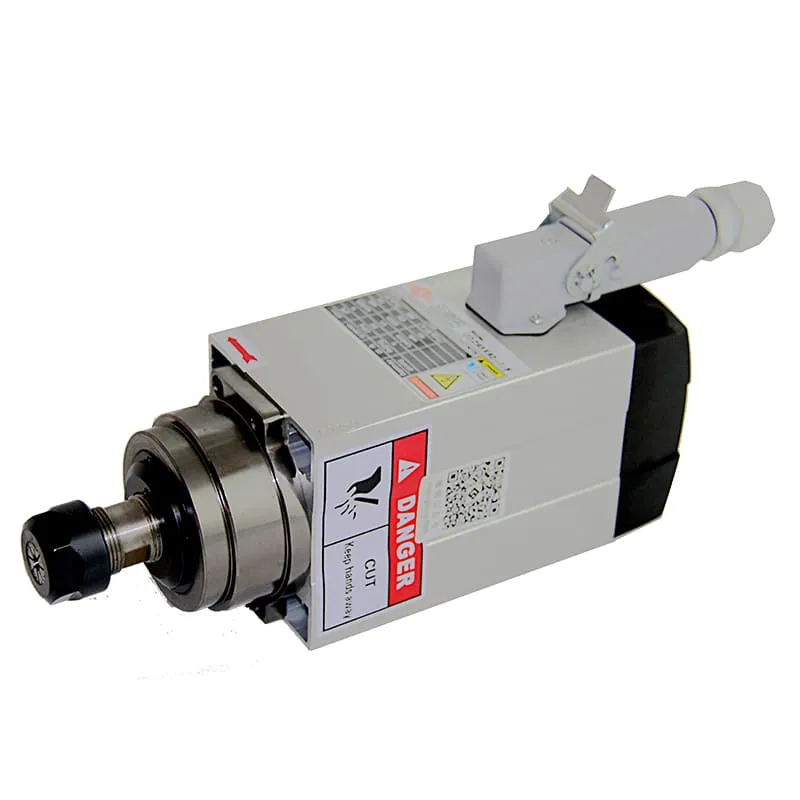What Is 2.5D CNC?
The concept of 2.5D CNC often emerges in conversations around CNC machining, but many find it difficult to fully grasp what it actually entails. While traditional CNC methods like 2D or 3D might be easier to understand, 2.5D CNC sits uniquely in between—offering an efficient balance for many machining applications. In this article, we will explore the definition of 2.5D CNC, understand its benefits, and clarify how it differs from other forms of CNC machining. Let’s get started by diving deep into the world of 2.5D CNC, with an in-depth analysis and some practical examples to bring clarity to this powerful manufacturing technique.
Understanding 2.5D CNC Machining
In 2.5D CNC machining, the term “2.5D” refers to a unique capability of the CNC machine to move in two primary axes (X and Y) while adjusting depth in increments on the Z-axis. This effectively means that while the machine can vary depth, it does not move simultaneously in all three dimensions to create complex contoured surfaces like in full 3D contouring. Instead, 2.5D machining is characterized by flat areas that vary in depth—making it ideal for creating parts that require precise pocketing, drilling, or milling operations without requiring the intricacies of full 3D modeling.
2.5D CNC is frequently used in metalworking and woodworking, especially for parts with multiple levels but not curved surfaces. It provides a practical solution for projects that don’t require full 3D complexity but need more depth than a 2D cut.
| Type of Machining | Axes Movement | Best Applications |
|---|---|---|
| 2D CNC | X, Y only | Cutting simple shapes, outlines |
| 2.5D CNC | X, Y, Z in steps | Creating pockets, drilling at varying depths |
| 3D CNC | X, Y, Z simultaneously | Complex shapes, 3D contours |
Key Features of 2.5D CNC Machining
- Flat Surface with Varying Depths: The most defining feature of 2.5D CNC is that it produces flat areas with different depths. The machine can only cut vertically into the material but not along a gradient.
- Step-Like Movements: 2.5D CNC machines move in a step-like manner on the Z-axis, meaning they can perform operations at discrete layers but not in smooth curves.
- Simpler G-Code: The G-code for 2.5D is much simpler compared to full 3D CNC programming, which allows for shorter programming times and easier code generation.
Explore our selection of CNC Spindles to ensure optimal cutting efficiency for your CNC projects.
How Does 2.5D CNC Differ From 3D CNC?
A common question is how 2.5D CNC differs from 3D CNC. In 2.5D, the machine can cut at different heights, but it cannot perform intricate simultaneous motions in all three axes, which limits it to creating stepped features rather than flowing curves. In contrast, 3D CNC machining involves fully coordinated movement in the X, Y, and Z axes, allowing for complex and smooth surfaces.
1. Complexity of Parts
- 2.5D CNC is best suited for parts that are mostly flat but have features like pockets, slots, or holes at various depths. Examples include engraved plates and flanges.
- 3D CNC, on the other hand, is needed when working with complex geometries like sculptures or parts with continuous contours and organic shapes.
“2.5D CNC bridges the gap between flat 2D operations and the fully dynamic capabilities of 3D machining.”
2. Programming and G-Code
The G-code for 2.5D machining is much simpler to generate than for 3D CNC. Most CAD/CAM software can output G-code for 2.5D operations automatically, whereas 3D machining often requires more intricate coding and toolpath calculations to achieve smooth transitions.
3. Tooling Requirements
For 2.5D CNC, tooling is often less complex and more affordable. The tools used are generally standard end mills that can plunge vertically and cut horizontally without the need for specialized cutters. 3D CNC tooling involves ball nose cutters or specialty bits to create detailed contours.
For a wide range of CNC projects, choosing the right spindle is vital. Discover our 1.5KW ER11 Square Air-Cooled Spindle with Flange for applications that need precision and efficiency.

Applications of 2.5D CNC Machining
2.5D CNC is commonly used across industries like metalworking, woodworking, and even in plastic part production. Its ability to create flat, stepped features makes it especially useful for manufacturing components that require pockets, flanges, or other features of varying depth without needing intricate curvature.
1. Woodworking Applications
In woodworking, 2.5D CNC is highly valued for making signs, cabinet panels, and other items where different levels of depth are necessary, but no 3D sculpting is needed. Using 2.5D CNC, intricate designs can be carved into wood with precision, adding a decorative yet functional element.
- Sign Making: Using 2.5D CNC, sign makers can add a depth component to lettering and shapes, which provides a professional and attractive finish.
- Furniture Panels: For cabinet panels and other flat parts, 2.5D CNC can create elegant recesses and pockets that make pieces look more detailed without requiring full 3D carving.
2. Metalworking Applications
In the metalworking industry, 2.5D CNC machining is applied in the manufacture of brackets, flanges, and mounting plates. These parts require different depths and pockets but do not have any complex contours that require full 3D CNC machining.
- Flanges and Brackets: Manufacturing flanges with bolt holes and recessed pockets is an ideal job for 2.5D CNC, as it allows each depth to be defined precisely.
- Die Cutting: The initial cutting of flat dies with stepped features is often performed using 2.5D CNC, where the material is cut in layers.
For more heavy-duty applications, the 3.5KW ER25 Air-Cooled Spindle is recommended to provide the necessary power and efficiency for metal-based projects.

Choosing the Right CNC Machine for 2.5D Machining
Selecting the appropriate CNC machine for 2.5D operations involves understanding the type of parts you intend to manufacture. There are a variety of CNC machines, each tailored to specific needs. Let’s explore some considerations to help you choose the right one for your applications.
1. Machine Type
- CNC Router: A CNC router is perfect for 2.5D woodworking tasks, where detailed designs and multiple levels of depth are common. These machines are typically designed for high-speed material removal, making them suitable for woods and plastics.
- CNC Milling Machine: For metalworking tasks that require precision, such as creating flanges or brackets, a CNC milling machine is ideal. It provides the rigidity and accuracy needed for metal parts.
2. Spindle Motor Selection
The spindle motor is the heart of the CNC machine, and selecting the correct spindle is crucial for efficiency and precision. For 2.5D CNC operations, using a spindle that has sufficient power for the material being machined will make a significant difference.
For smaller applications, our 2.2KW ER16 Air-Cooled Spindle is highly recommended for a combination of power and versatility.

3. Consider Software Compatibility
A key part of successful 2.5D CNC operations is using compatible software to generate toolpaths. Most CAM software packages, like Fusion 360 or VCarve, offer straightforward solutions for generating 2.5D toolpaths.
- Ease of Use: Make sure the software you select is easy to use and supports the generation of G-code that your CNC machine can understand.
- Visualizing Toolpaths: Use software that allows you to simulate the toolpaths before running the program on the machine. This step helps identify errors and refine the cutting process.
Benefits of 2.5D CNC Machining
2.5D CNC machining is a favored choice for many manufacturers because of its distinct advantages. From cost efficiency to precision, the benefits of 2.5D CNC make it an appealing choice for various production tasks.
1. Cost Efficiency
One of the primary advantages of 2.5D CNC machining is cost efficiency. Compared to 3D CNC machining, the simpler tool paths and less complex programming reduce setup time and operational costs. The tooling is also less expensive, given that 2.5D CNC typically uses standard end mills rather than more specialized bits.
2. High Precision for Stepped Features
For parts that require precise stepped features, 2.5D CNC excels. This type of machining is ideal when the goal is to create features like flat surfaces, pockets, and slots with a high degree of accuracy.
- Consistency: The step-based nature of 2.5D machining ensures that each pocket or slot is machined to exactly the same depth, enhancing the consistency of the part.
- Simplicity: Because it involves simpler programming and fewer moving axes compared to 3D CNC, operators have more control, resulting in fewer errors.
Discover our range of Spindles for CNC Router applications that are designed to achieve precise machining results.
Conclusion: The Role of 2.5D CNC in Modern Manufacturing
In conclusion, 2.5D CNC occupies a unique niche in the world of manufacturing. It combines the simplicity of 2D operations with the depth of 3D operations, making it versatile for many applications. Whether in woodworking or metalworking, 2.5D CNC offers a practical solution that balances cost, complexity, and precision. By understanding its features and appropriate use cases, manufacturers can effectively utilize 2.5D CNC for a wide range of projects, from engraved signs to precision brackets.
Investing in the right CNC spindle motor is key to ensuring success in your CNC projects. Our selection of CNC spindles will help you get the most out of your 2.5D CNC machining, offering reliability and precision.
FAQs
1. What does 2.5D mean in CNC machining?
2.5D CNC machining refers to the process where the machine moves along the X and Y axes while adjusting depth incrementally on the Z-axis, allowing for flat layers of varying heights without full 3D contours.
2. What are the key advantages of 2.5D CNC?
The main advantages of 2.5D CNC are its cost efficiency, simpler tooling requirements, and its ability to produce precise stepped features that are commonly needed in metalworking and woodworking.
3. Can I use 2.5D CNC for woodworking?
Yes, 2.5D CNC is commonly used in woodworking for tasks like sign making and creating detailed panels. It allows for varying depths without the complexity of full 3D carving.
4. What is the difference between 2.5D and 3D CNC?
2.5D CNC creates stepped features with flat surfaces, while 3D CNC allows for smooth, flowing contours along all three axes simultaneously, making it more suitable for complex geometries.
5. What spindle motor should I use for 2.5D CNC?
For most 2.5D CNC applications, we recommend the 2.2KW ER20 Air-Cooled Spindle for its versatility and power, suitable for both woodworking and light metalworking.

